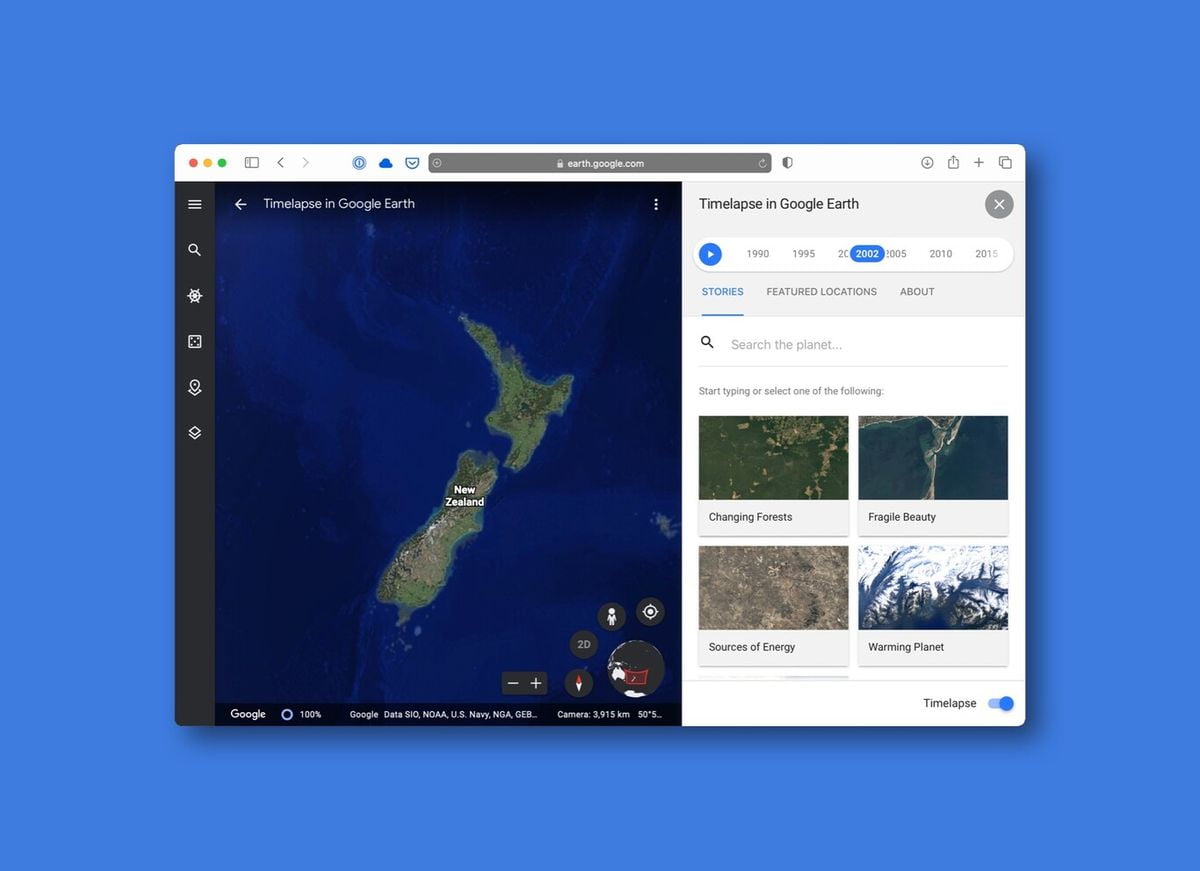In the last few hours, Google has updated its satellite imagery service, Google Earth, with what it says is the biggest update since 2017. It now incorporates a new timelapse functionality for which they have gathered more than 24 million satellite images collected over the past 37 years.
Google Earth adds Timelapse feature
The new feature allows us to see the Earth from another perspective, one that shows us the changes it has undergone due to natural or human actions. Using specific locations around the world, we can see year by year how they have changed.
Compiling this data, however, has not been an easy task. We are essentially in front of a timelapse of the entire planet. For this Google collected more than 24 million images thanks to collaborations with NASA, National Geographic, or the European Union among others. They say it took more than two million hours of processing on thousands of Google Cloud servers to compile the 20 petabytes of data. According to Google, Timelapse in Google Earth is the largest video on the planet.
See how the planet changed over the last 37 years

The changes that we can observe in the planet through Google Earth Timelapse are curious. There are different themes, such as urbanization, deforestation, or global warming. From Google Earth, it is possible to access the tool to either search for specific points of the world or choose some of the recommended ones.
Likewise, Google has made available to users hundreds of videos on YouTube where these time-lapses of different locations on Earth are collected. There is also a dedicated website to download the videos and use them for educational purposes.
Finally, there are five guided views that Google created in partnership with Carnegie Mellon University’s CREATE Lab. These views focus on five of the most impactful issues affecting the planet today: deforestation, global warming, energy sources, urbanization, and what Google calls “fragile beauty.”
Google plans to update Timelapse with new images every year for the next decade. According to them, Timelapse allows “assessing the health and well-being of our only home, and is a tool that can educate and inspire action”.





